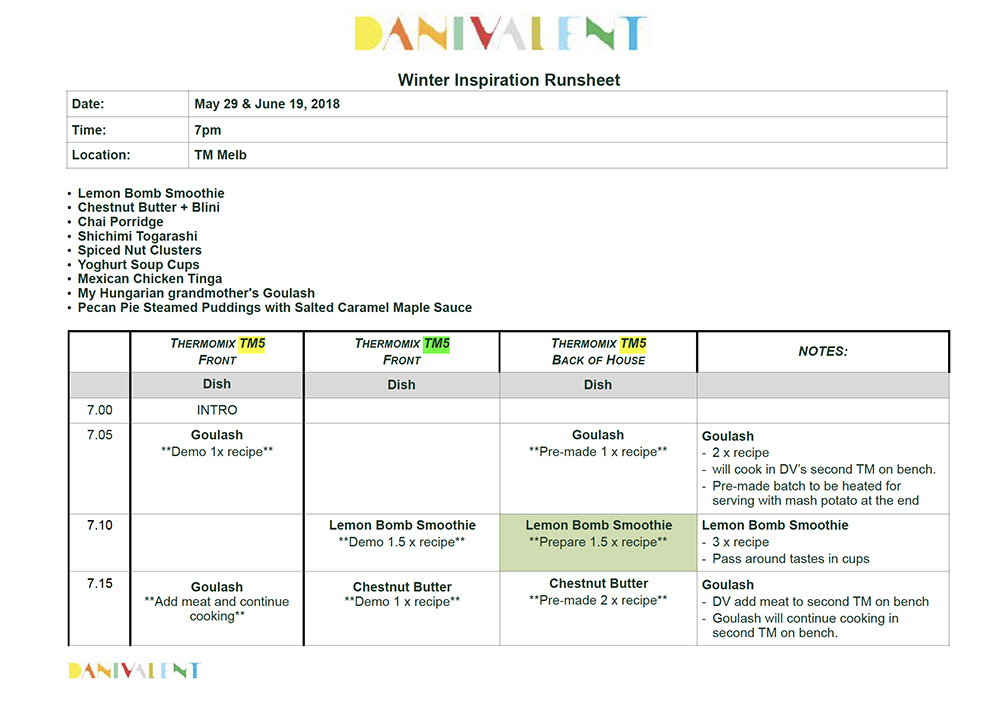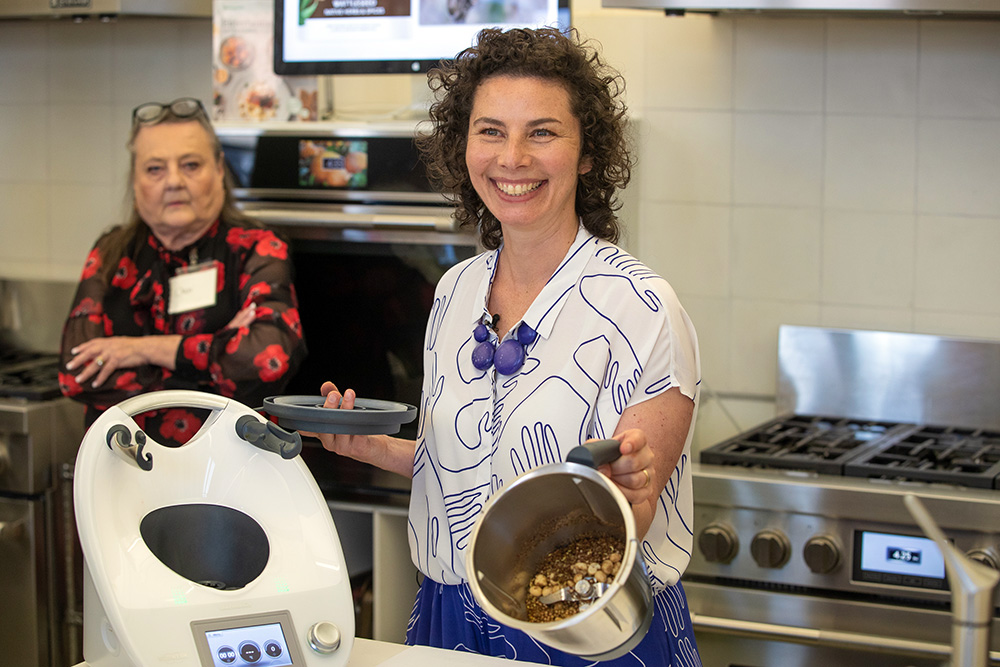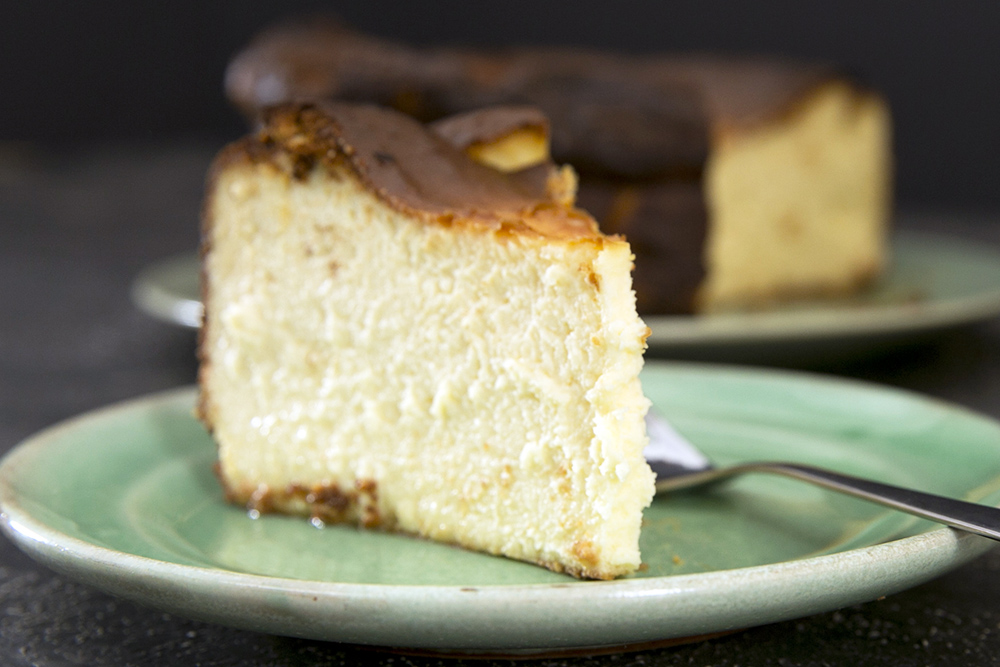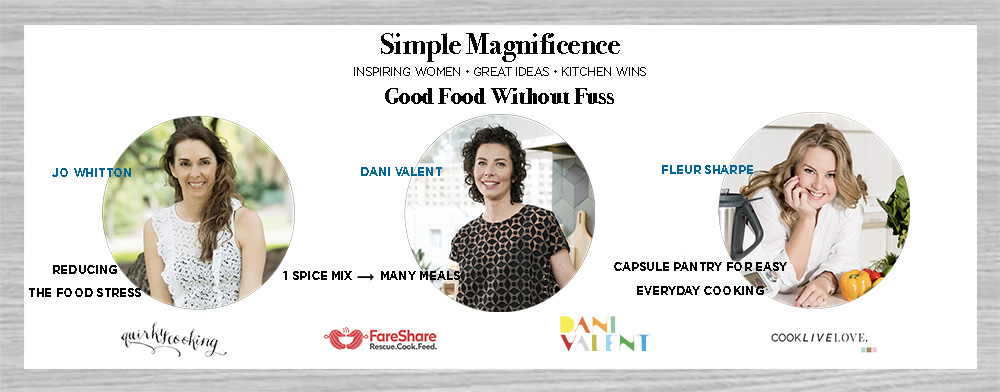Planning strategies, advice and tips for success
You love cooking. People swoon over your food. Your friends are always asking you for recipes and you’re the phone-a-friend guru when they have a cooking conundrum. You know you have great food ideas to share and holding a cooking class seems like the logical next step. Great! You should do it! But how do you hone your offering and get a crowd to come along?
1. Find an angle
Before you put your class on sale you need to know exactly what you’re offering and what the benefits of attending will be. The clearer you are in your own mind, the better you’ll be at communicating the wows and wins to potential attendees.
Think about what you’re good at and the information you want to share. You might be focusing on a particular style of cooking – barbecue, Indian, gluten-free or celebration cakes, for example. Your angle might be solving a problem for home cooks. For example, I’m running a class in Brisbane in June that is all about ‘Simple Magnificence – creating good food without fuss’. Other classes of mine have focused on Thermomix dishes for winter, let’s say, or Christmas, depending on the time of year. If you’re a whizz with knife skills, think about dishes that allow you to demonstrate different techniques. If you’re expert at curry pastes, choose recipes that allow you to highlight different ingredients or styles of curry.
Being specific is good: give people a reason to choose your class.
2. Have a hero recipe or two!
Do you have a hero recipe that you know people love like crazy? A surefire one for me is my Basque Cheesecake. It’s my most popular recipe and video and is a drawcard when I’m promoting a class. Another hero recipe of mine is a Chicken Tart which allows me to demonstrate some really cool and interesting techniques: flavoured pastry, an easy way to shred chicken, and how to make a pastry lattice.
When considering your hero recipes, think about how you might market them. For example, relatively difficult recipes can be marketed as simple step-by-step tutorials. I love seeing people walk into a class thinking “I could never make that” and then walk out writing their shopping list. It’s a very satisfying transformation as a teacher, and even better when they tag you on social with their kitchen wins! If your hero dish is pretty easy, you can add value by sharing alternative ways to prepare it or dress it up, or unique tips to make it even tastier. At every step, think about ways you can add value.
For example, my program at Simple Magnificence steps people through five different ways they can use a curry powder to create easy and delicious meals. It’s all about the wins for the home cooks attending my class.
Whether your dishes are simple or complex, be sure to pick recipes that balance unique selling points with being teachable. And – crucially – make sure you know the dishes inside out. There’s no point demonstrating something that you’re not sure of yourself.
3. Nail the logistics
Once you know what you want to teach, you’ll be better placed to work out the structure of the class. Is it going to be hands-on or purely demonstration? Will you offer tastings of all dishes? What venue might you use? Will your customers be more likely to come to a weekday/weekend, daytime/evening class? How long will your class take? What kind of help will you need to set it up, run it and – importantly – clean up? Does the venue have public liability insurance or do you need to arrange your own?
Smooth ticketing is key. I have a ticketing plug-in on my website but I’ve also used ticketing services like Eventbrite. One advantage of a dedicated ticketing service is brand awareness: people are understandably wary of sharing credit card details with unknown providers.
Budget rigorously, including accounting for easily forgotten items like napkins and recipe print-outs. If you’re being serious about your cooking classes as a business, you also need to account for your own time – set an hourly rate and keep track of how long it takes you to plan, promote and run your class.
4. Final planning
As the chief cook, host and teacher, you have a lot to do during your class so make sure you’ve planned it all out in advance. Creating a lesson plan ahead of time is key to ensure everything runs smoothly and to time.
My classes usually have two or three cooking stations, so while one dish is cooking, I can move onto the next. I plan it all out to the minute, leaving leeway for questions and unforeseen situations – those times when the potatoes just don’t cook as fast as they normally do, or the oven at the venue heats up reeeeaaaallly slowly!
If possible, run through your whole program at home, ideally with a friend on hand to offer feedback. Often things you think are really obvious – how to deseed a chilli, let’s say – are the genius tricks that people will take home as a win so don’t be afraid to keep it simple and slow down.

5. Marketing
Exposure is everything when it comes to getting the word out about your class. Naturally, you’ll want to promote it to your email list and social media networks and if you have a website, you will put it there too.
Ticketing sites will allow you to organise your own event page for the class which helps in reaching different communities that don’t know about you and your offering yet. Creating an event on Facebook can do the same and has the helpful bonus of allowing potential students to indicate their interest through the page and thus share it with their friends and chat with other potential attendees. There’s a lot you can do for free but you can also consider boosting your reach with paid promotions.
6. That last little push!
There are lots of other things you can do to build interest in your class. Continue to share information about recipes, ingredients, techniques and take-home wins as the time draws closer – you never know what will pique a person’s interest. Do you have friends working in similar fields who would share news of your class? You can do the same for them when they have something to promote. If it’s coming close to the time and you still have tickets to sell, you could email attendees with a discounted price if they bring along a friend. To create even more value in your class, see if you can connect with aligned brands who would like to promote their wares to your class in the form of goodie bags or door prizes.
Your first cooking class may well be your hardest but it can also be very rewarding. I love cooking classes! I always learn from them and love seeing people leave inspired and energised.
Success comes from clear delivery of information, upbeat energy and rigorous organisation. Make sure you capitalise on your hard work by staying in touch with attendees after the class so you can keep building on the connections you’ve created. The better job you do with your first class, the more likely you are to have happy customers who are looking forward to the next one.




Leave A Comment